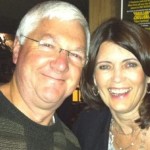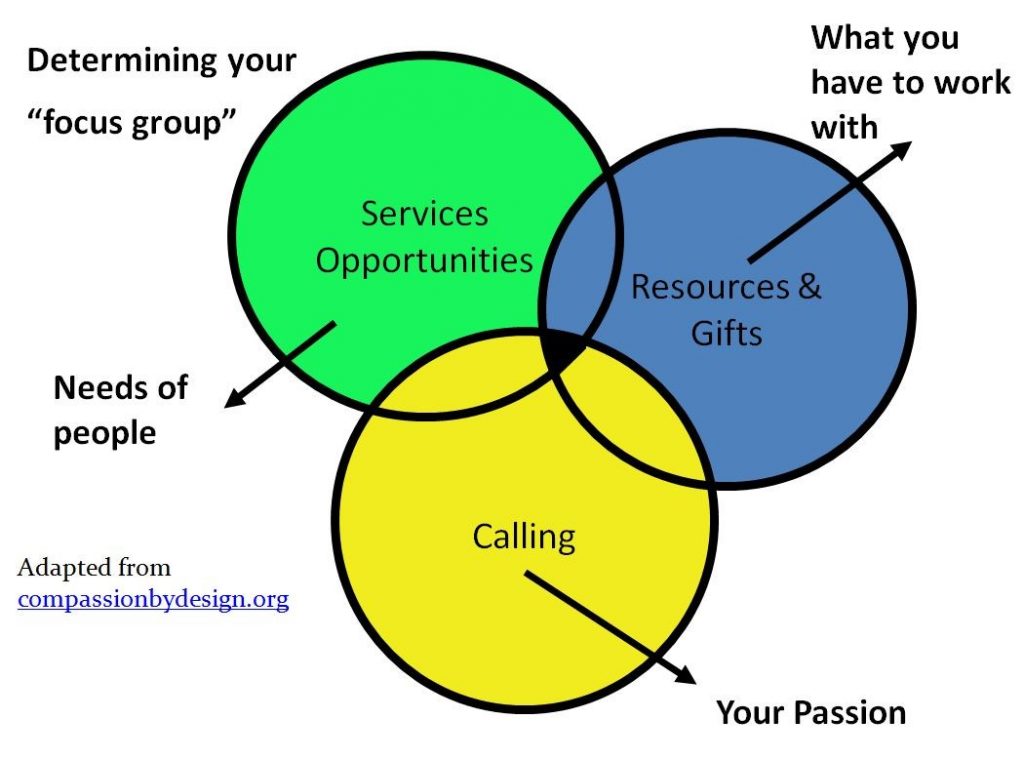In order for a congregation to participate actively in what Christ is doing in the community where it meets, it must get to know that community well. There are multiple ways to do so with a particularly effective one being the nine-step community assessment process detailed in the article below by GCI pastor Sam Butler who draws on his ministerial experience and relevant literature.

Conducting a community assessment is a great way for a congregation to get to know and engage its community—vital first steps in advancing a balanced and thus effective disciple-making (Great Commission) ministry process. In my experience, an effective community assessment process involves these nine steps:
1. Gather demographic information
By gathering demographic information, a church is able to gain a quick insight into some of the defining characteristics of their community. Those characteristics include things like population, ethnic/racial and generational makeup, levels of education, incomes, etc. Obtaining this data helps a church frame its process for further information gathering. For places to go to get demographic information, click here.
2. Conduct surveys
Surveying the community is a useful way not only to gather information, but also to initiate conversations with community residents. I recommend two types of surveys. The first, which is the most detailed, involves surveying community leaders—folks who have a good understanding of what is going on in the community. This survey works best face-to-face, which facilitates relationship-building and provides opportunity to share the congregation’s purpose while addressing their concerns. When community leaders hear of a congregation’s interest in their community and its desire to be of help, nearly all the leaders interviewed will be open to sharing relevant information, including valuable contacts. At the end of the interview, it’s good to ask the individual for the names of two other people they would recommend for an interview, thus broadening the base, increasing the likelihood of obtaining more detailed information.
Here are some sample questions to ask in this type of survey/interview:
- What are the greatest assets and strengths you see here?
- What gives you hope when you think about this community and its future?
- What are your main concerns about life in this community?
- What do you see as the major social, economic, cultural or spiritual challenges here?
Note that these are open-ended questions, allowing for the individual to talk and express how they feel.
The second type of survey involves the use of a written survey instrument handed out to a sampling of people in the community. The idea is to distribute enough of the surveys to get a representative number back. The questions on the survey should be open-ended, brief and to the point. Here are some sample questions:
- What do you like best about this community?
- What makes it a good place to live?
- What are one or two changes you would like to see that could make life better in this community?
There are a number of ways to distribute this survey, including going door-to-door, or setting up a table in a public gathering spot (Walmart, in front of City Hall, at a park, etc.).
3. Complete a community walking/gathering exercise
One of the best ways to get to know a community is to get out into it, taking notes about what is observed/experienced. A group of members can do this together (it’s fun!). It’s preferable to walk, but for those who are unable, riding in a car is fine. The main idea is to get as many members involved as possible. Doing so helps buy-in, setting the stage for further engagement down the road. As you walk, watch for people groups, places of activity, signs of change, signs of hope and signs of need.
4. Build networks
A vital part of engaging a community involves collaboration. Because one person or group cannot have a full grasp of all the details of community, tapping into a community’s existing knowledge base is essential. Working collaboratively with people already engaged in the community yields multiple benefits, including gaining information from knowledgeable people who will help you in your planning, building long-term relationships within the community, and the potential for forming partnerships.
There is a wonderful Trinitarian flow to such networking. When we ask the question, “Lord, what are you up to and how can I get involved in what you are already doing?” the concept of networking comes up. God is already involved in the community in the lives of all the people, so it makes good sense to tap into this resource.
In seeking to build networks, don’t overlook existing ones. Our experience shows that many church members are somewhat unaware of the networks they already are part of. There is a good example of this in Scripture in Mark’s account of the Gerasene demoniac healed by Jesus. After his healing, he wanted to travel with Jesus, but Jesus tells him to “go home to your people and report to them what great things the Lord has done for you, and how he had mercy on you.” That’s what he did, and as Mark writes, “everyone was amazed” (Mark 5.19-20). Commenting on this account, one author wrote this:
The restored demoniac went back to his family and friends. The newest Christian will always be the most effective evangelist. Usually we attribute this to the person’s newfound zeal, and that’s part of it. But the real reason they’re most effective is because they have the largest network of non-Christian friends…. He could share Christ through his relationship of trust, through his network of friends, relatives, associates and neighbors.
5. Identify “people of peace”
The concept of a person of peace comes from Luke 10, where Jesus sends out the seventy. A person of peace is described as one who opens up their home and receives a disciple as a full guest, and then introduces the disciple to a network of friends, family, business associates, etc. Thus a person of peace is someone who is well connected in the community, who is willing to come alongside the Christian evangelist and offer help and advice, as well as refer the evangelist to others who may be able to help. This person of peace may or may not be a believer. Often they will surface during the surveying step noted above.
6. Walk the community in prayer
According to LifeWay’s Transformational Church research and resultant services (used by GCI in its church consulting), one of the elements consistently present in churches that are transformational is prayerful dependence. The general concept is that since all ministry is the ongoing ministry of God the Father, through Jesus Christ, by the Spirit, it makes sense that we talk to God about his ministry and our part. Matthew tells us in his Gospel: “Ask, and it will be given to you; seek, and you will find; knock and it will be opened to you. For everyone who asks receives, and he who seeks finds, and to him who knocks it will be opened” (Matt. 7.7-8). As we engage in the discernment process of community assessment, we need to be in prayer about it before, during and after—asking God for the wisdom and discernment necessary for success. Next we need to go out and explore our community, observing, absorbing, praying. Finally, we engage as we go, interacting with people we encounter.
Prayer walking embodies all these elements, making it an essential part of community assessment. Prayer walking is the process by which we seek God’s will in mission by prayerful engagement. The prayer focus is one of conversation with God while actively listening through observation and engagement. By walking through the community, we can talk with God about what we see. As we casually interact with the people of the community, we can begin to converse with God about them, seeking his will for them and offering to pray with and for them. Engagement and relationship building is the result.
A street that is prayer walked in this way is no longer just a street on a map, or one we drive through to get somewhere. We make connections. We talk with God about what we’re observing. The people and the community become more important to us… we are becoming engaged.
7. Process the gathered information
It is essential now for all active participants in the assessment process to come together to review the data and insights gathered. Each of the six steps that have led up to this moment have much to contribute. It’s important during this step to pray for the Spirit’s guidance. Here are three questions from Heidi Unruh that can be asked to spark discussion:
- How have we seen God at work in the community?
- What needs or problems diminish God’s desire for the community?
- How would our church participate in God’s vision for the community?
Answering these questions helps identify where God is already working and how the congregation might join in. Maybe the decision will be to partner with another organization, joining what they already are doing. Or maybe the decision will be to launch a new community service initiative using the particular gifts and resources of the congregation. Either way the focus must always be on community engagement leading to disciple-making.
8. Identify the congregation’s focus group
As shown in the diagram below (from community engagement expert David Mills), a careful and thorough assessment of the community will enable the congregation to take a vital step in engaging its community—identifying a focus group. This is the group that lies at the confluence of three things: 1) the needs of the community (that suggest opportunities for service from the congregation), 2) the congregation’s resources and gifts (that can be deployed in serving the community), and 3) the congregations sense of calling (God-given passion for ministry).
Mills calls this confluence a “strategic match,” which provides a systematic way to determine a congregation’s focus group. It’s a vital issue, where “the rubber meets the road.” Everything in the assessment process detailed above leads to this—identifying people in the congregation who will begin to actively reach, as we say in GCI, “Outside the Walls.” These are the unchurched people the congregation will seek to connect with—serving them in Jesus’ name, building relationships, sharing the gospel, making disciples.
Note that a focus group may be defined in terms of ethnicity, geography, generational composition, socioeconomic factors, similar interests (forming affinity groups), etc. With the discernment of the Spirit, a congregation can evaluate the data collected, the community conversations and observations, and make a determination as to who their focus group will be. As they then move forward, adjustments can be made, but this assessment process is a great place to start.
9. Intentional gathering
Once the focus group is identified, the next step is to engage that group in meaningful ways with “the end in mind”—seeing people from within the focus group become followers of Jesus (disciples). For that to happen, the congregation must be intentional about gathering people from the focus group (we call this “intentional gathering”). There are many ways to gather folks. Examining some of them will be the topic of future articles here in Equipper. In the meantime, here is a video that details the intentional gathering work in GCI’s San Francisco congregation.
On YouTube at http://youtu.be/QIRRBEMxqyM




Please note that comments are moderated. Your comment will not appear until it is reviewed.